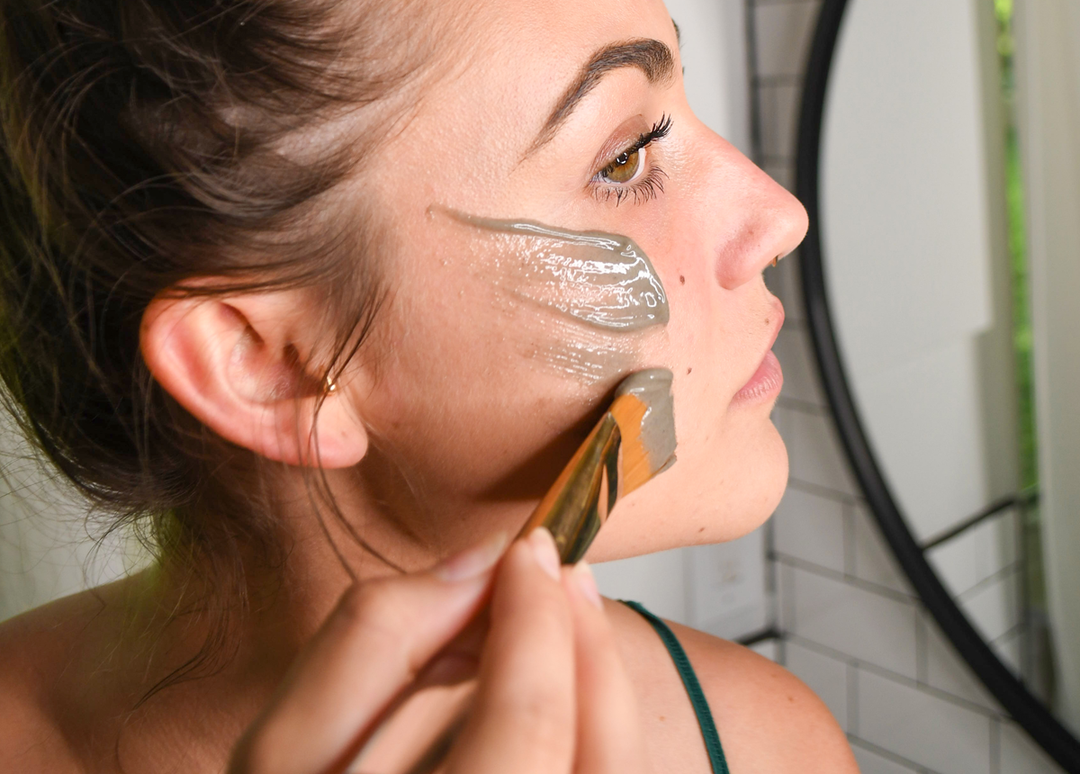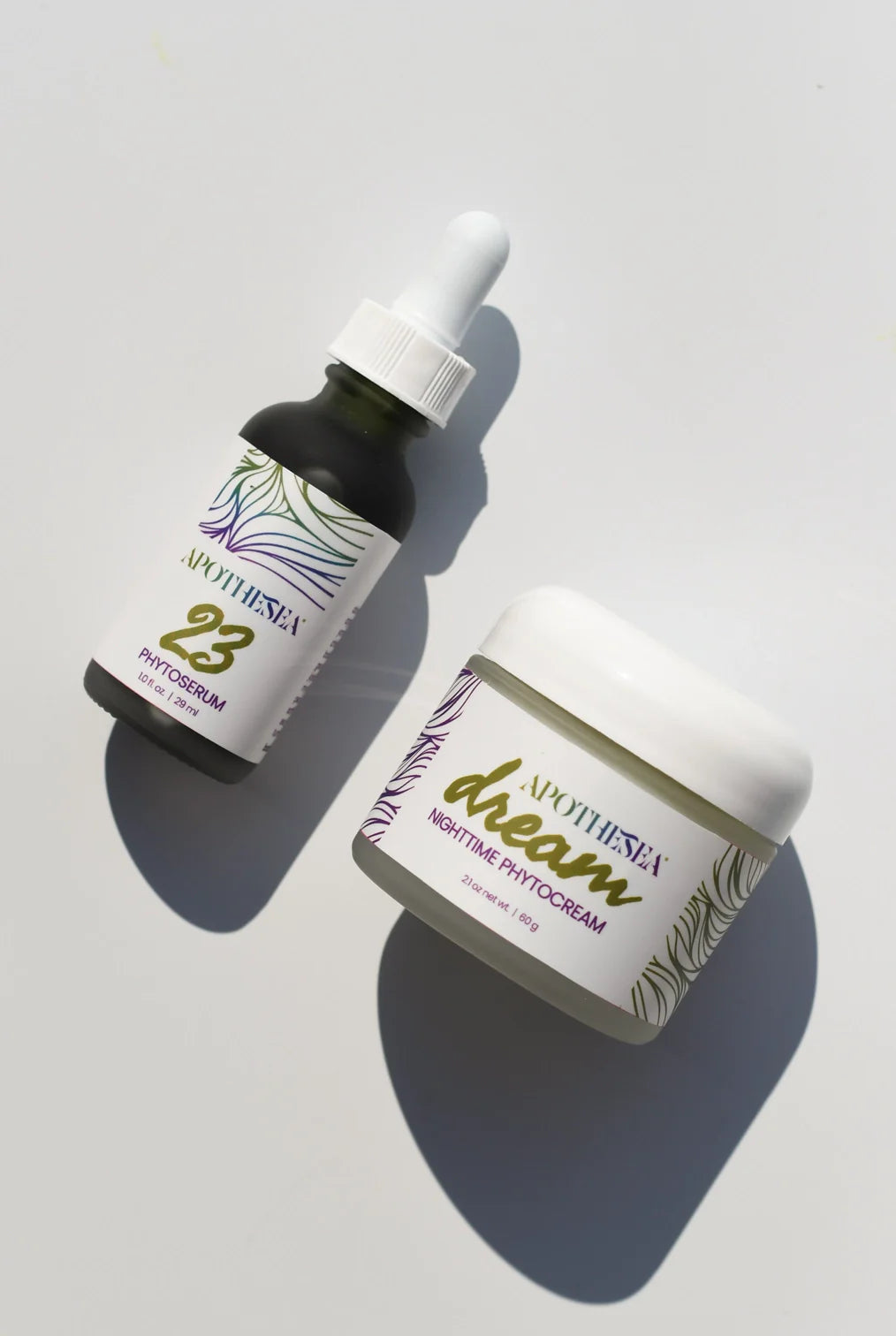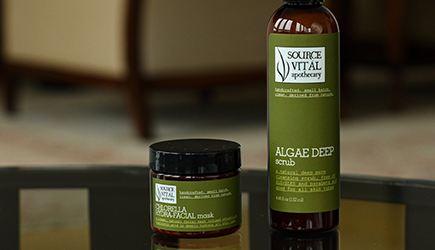Your Guide to Achieving Ageless Skin Through Proper Exfoliation
Exfoliation, a How-To
One of the best things you can do for ageless skin is exfoliate.
Exfoliation is a process to remove dead skin cells on the outer layer of the skin to give the skin a smoother, brighter appearance. It helps to get rid of the dry, flaky skin cells that can cause breakouts and make the complexion look dull and lifeless. It also helps to rev up the skin’s natural regenerative efforts to more quickly produce fresh, new, younger cells. Plus, it unblocks pores to help the skin better absorb and make use of the products you use.
There are more aggressive exfoliants, like glycolic peels, that will exfoliate the skin but these are done by professionals. Our focus here is all about exfoliants you can use at home.
So knowing that regular exfoliation equals a healthy, smooth complexion and skin that appears ageless, then surely we are all incorporating regular exfoliation into our personal care routines – wrong!
Life gets busy and taking the extra time to buff our skin to beauty is a step that is often skipped. When you add in the different types of scrubs, peels and exfoliators into the mix it can start to feel a bit overwhelming.
Well, consider this your ultimate go-to guide to exfoliation. The keys to getting the right kind of scrub boil down to three main things: ingredients, skin type and method.
Ingredients
There are two main types of exfoliators—manual and chemical. Manual is, of course, the most common exfoliating products—what most of us call scrubs. These typically contain some sort of gritty substance that you manually move around the skin to buff away dry, uneven textures. They are quick and easy to use
When choosing a manual exfoliator, it is important to look for scrubs that will not tear or harm the skin. With formulas that are too grainy or aggressive, you can actually do more harm than good by cutting or breaking the skin, promoting irritation and possible infections.
Another manual option is gommage peels, some of which also have a chemical aspect to them. Gommage peels usually have a thick consistency and are applied to the face like a thin mask. The product is left on the skin for a few minutes while it sets up (or dries slightly) then it is rubbed off with the hands, a washcloth or facial gauze taking dead skin cells with it.
Chemical exfoliators, work to dissolve and loosen the “glue” that holds dead cells to the skin. Chemical exfoliators are more about the ingredients in the product and how they react with the skin. Generally, they are applied to the skin and allowed to remain on the skin for a period of time then removed. Chemical exfoliators also include alpha hydroxy acids (AHA’s) and glycolic peels, which again are more for professional use rather than home use.
Chemical exfoliants, if not used correctly, can leave painful burns on the skin that can take weeks to heal. They can be extremely active depending on the percentage of active ingredients being used. It is a good idea to spot test your skin before using these to make sure that you are not sensitive to the formulation.
If you have a more holistic perspective, look for products made with natural ingredients that offer a gentle but effective alternative.
We use freshwater colloidal silt and natural corundum crystals. These gently smooth the skin without leaving micro cuts on the surface of the skin. The silt has the added benefit of naturally-occurring humic acids, which offer the same skin smoothing benefits as the generally more aggressive AHA’s.
Instead of harsh chemicals, we turn to essential oils. The right blend of 100% pure oils can offer similar resurfacing benefits as expensive and aggressive glycolic or AHA chemical peels. Citrus oils are especially beneficial when used to reveal a healthy, glowing complexion.
Skin Type
Everyone has a different set of genetic, lifestyle, diet and climate factors that impacts our skin. As with any skin care regimen, it is important to customize the products and protocols to meet the particular conditions of your skin. The same goes for exfoliation. Sensitive skin types need a very different approach than do oily or combination skin.
Before we discuss the different skin types there are certain conditions that should use caution with exfoliation
- Skin that is very thin and has visible capillaries
- Thin skin that turns red easily (see sensitive)
- Mature skin that is thin and bruises easily
- Skin prone to acne with inflamed breakout
- Skin being treated with medications—Retin-A, Accutane, AHA’s, salicylic acid or other prescribed products
If you are experiencing any of these skin conditions you may want to consult a dermatologist about the best way to care for the skin. Using the wrong products or method of exfoliation can worsen these issues.
Unsure about your skin type? Check out our previous blog on Skin Types to help you figure out the right exfoliation protocol for your complexion.
Sensitive Skin – Sensitive skin requires more caution that other skin types. Sensitive skin is reactive skin. It reacts to stimulation with redness and breakout. It is common to “feel” tingling and sometimes a slight burning sensation when trying new products.
Finding the right exfoliation method requires some trial and error.
- Opt for manual exfoliators
- Gommages are the gentlest option
- Use less pressure when buffing the skin
- Limit exfoliation to 1 x a week
- Always spot test before applying all over the face and neck
After exfoliation, sensitive skin will still turn red but it should dissipate after a short time.
Dry Skin – The goal with dry skin is to reduce flakiness, remove cell build-up and rough texture to create a softer, smoother skin. Whether your skin is dry due to dehydration (water dry) or the skin simply isn’t producing enough of its natural oils (oil dry) the method of exfoliation is the same.
- Manual or chemical exfoliation is appropriate
- Start by exfoliating 1 x a week
- Up exfoliation to 2 x a week as/if your skin will tolerate
Oily & Acne-Prone Skin – Oily skin tends to be thicker and build up dead skin cells more quickly than other skin types; therefore, exfoliation is extremely important. If oily skin is not taken care of properly, dirt, dead cells and grease can stop up the follicles, creating pimple, blemishes and even acne.
- In the beginning exfoliate up to 2 x a week (for 2 weeks)
- Exfoliate 1-2 x a week for average maintenance
- Treat acne skin similar to oily skin
- Avoid exfoliating over areas experiencing active, inflamed breakouts
- Use caution if using acne medication
Normal & Combination Skin – While normal skin tends not have the problems associated with breakouts, dryness or the feeling of excessive oil, it still can appear dull and lifeless from a build-up of dead skin cells. A simple weekly exfoliation can make all the difference in the appearance of the skin.
- Manual or Chemical exfoliation is appropriate
- Start with exfoliating 1 x a week
- Up exfoliation to 2 x a week after 4-6 weeks, if your skin will tolerate
Mature/Prematurely Aging Skin – Mature skin tends to be more delicate, especially as we age. More care is required when doing exfoliation to avoid pulling and stretching the skin.
- A gommage is especially good for this skin type
- Use gentle motions and less pressure with mechanical exfoliators
- Spend a little more time with the exfoliating process
- Take care not to pull or stretch the skin
- Support the skin by holding it in place with one hand and exfoliating with the other
- Exfoliate 1-2 x a week
By following these guidelines, you will still see results with less stress on the skin.
Method
Gentle is the key here. We are treating our skin, not scrubbing pots and pans! Red, raw skin is never the goal with exfoliation.
Massage, Don’t Scrub
When exfoliating, you want to think about lightly massaging the skin, using small, circular motions. This movement helps to stimulate the skin, encouraging blood flow and oxygen the cells need for good health.
Support the Skin
Try not to pull or overly stretch the skin, especially when working with the delicate area around the eyes. Start working with small areas, use one hand to support the skin while the other performs the massaging technique described above.
How Often & For How Long
Consistent is more important than frequent when exfoliating. How often you exfoliate the skin really depends on your particular skin type; however, the general rule is once per week. As mentioned above, sensitive and mature/aged skin should be handled much more delicately than oily skin.
The bottom line is overdoing exfoliation can over-stimulate the skin, which can lead to undesired results.
Ease In
When you first start to incorporate exfoliation into your routine, it is best to ease in. This also is the case whenever you are using a new product. It gives time for your skin to get used to the new regimen without flipping out.
Start by exfoliating once a week. Choose a day and try to stick with that day. You can make it a part of your personal care ritual where you relax, take a soothing aromatherapy bath. Incorporate your exfoliation into this process or keep your products in the shower (if using a manual exfoliating “scrub”) for easy use and clean up.
After 4-6 weeks, try upping your regimen to twice a week, though this is not recommended for more sensitive skin types, and see how your skin accepts the increase.
At this point, try mixing and matching the exfoliation products you use. Try alternating manual scrubs with a gommage peel or try a chemical exfoliator, like Aroma Peel once a month (or even once a quarter).
Remember that too much exfoliation can over-stimulate your skin. “Listen” to your skin. It can be very vocal with break outs or sensitivity when it doesn’t like what you’re doing to it.
Follow Directions
Always follow the suggested use directions on the packaging. This is especially important when using chemical exfoliators.
Generally, for manual exfoliation, massage the product into the skin for about a minute. You may let it sit on the skin, like a mask, for another minute or two before rinsing off.
For gommage peels, like Source Vitál Apothecary’s Citrus Peel, you need to let the product set up for several minutes and dry slightly before working it off. If it is still tacky to the touch it isn’t ready.
Chemical peels can vary with how to use. Some you apply, leave on for a few minutes and then rinse away. Others, like our Aroma Peel, you apply it to the skin and it will immediately start to sink into the skin; there is no removal required as it is left on the skin.
If there is ever any uncomfortable burning or itching with any product for the skin or body, remove it immediately.
Moisturize & Protect
Once you are done exfoliating think calm. It’s a good idea to use a nourishing face oil like our Hydrating, Restorative or Soothing Infusion and a moisturizing serum such as one of our Algae Serums.
Finish by protecting the skin with your favorite moisturizer. The skin will drink up the hydration and nourishment as the skin is prepared to absorb it more efficiently. For now, keep clear of any products that contain potentially irritating active ingredients. Let the skin first come back to a place of balance.
For the Body
The guidelines above are geared mostly for exfoliation of the face, neck and upper chest area. Many of these recommendations are the same for the body.
While it is ok to use facial exfoliants on the body, it is not ideal to use body exfoliants on the face. Formulas for the body usually contain a bit more grit, tend to be more emollient and are designed to be used on areas that take more abuse.
Dry brushing is an excellent body care ritual for good skin health. All you need is a natural bristle body brush. Use the brush on dry skin (hence the name dry brushing) and use short quick strokes to sluff away dry, rough skin. Start from your feet and move upwards to the arms, chest area and torso, always stroking towards the heart.
Dry brushing really gets your blood and fluids flowing, resulting in super soft skin and an energized state of mind.
For a complete rundown of exfoliation products for the face and body visit our online store at SourceVital.com. If you have any questions, tips or tricks, leave us a comment below.








Leave a comment